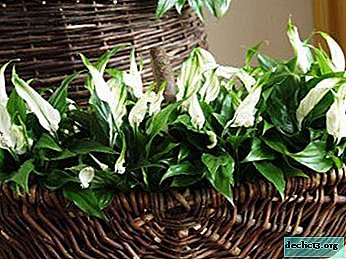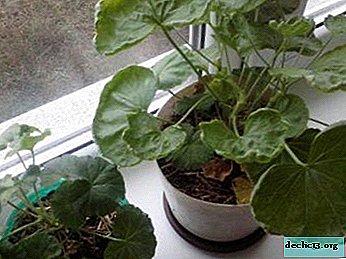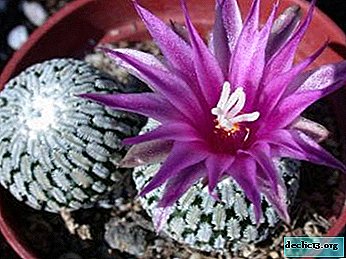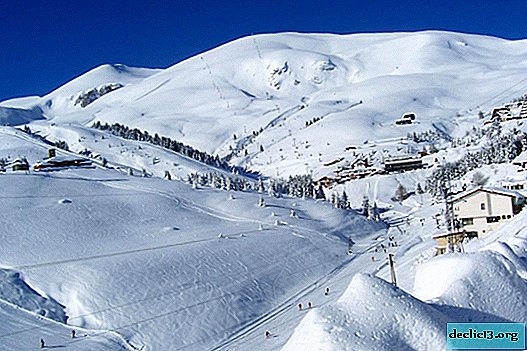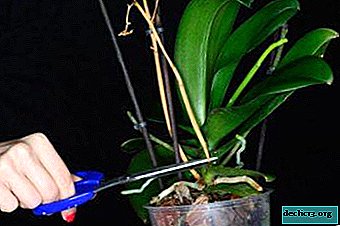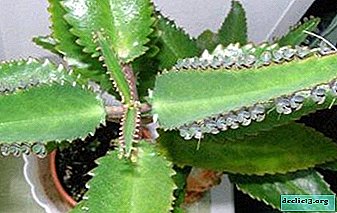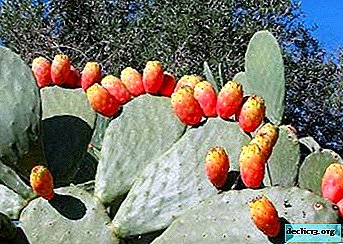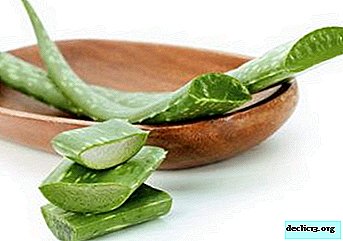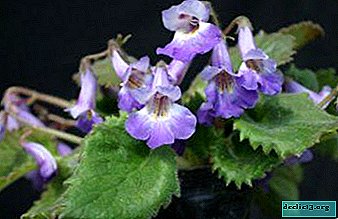All about silk pelargonium: Moira, Aurora and other species. Proper care, reproduction, disease and pests
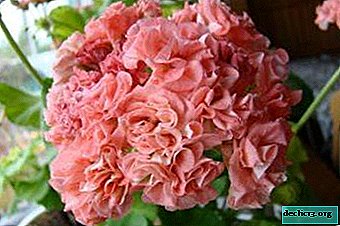
The long-blooming luxurious beauty Pelargonium silk has long been popular among flower growers and can become a real decoration of the house.
Therefore, we will tell you more about it: how to properly care for, breed and how to deal with pests and diseases.
Also, thanks to the photo, you can admire this flower and see how exactly its different varieties can differ, what features they have.
Botanical description, history and price
Evergreen Pelargonium native to South Africa. Its fruits are similar in shape to the head of a stork, so the plant got its name (pelargos from Greek translates as "stork").
Pelargonium is often called geranium, which is not true, since geranium and pelargonium are two separate genera of the geranium family.
 Two genera can be distinguished, for example, by flower petals - in geranium all the petals are the same, in pelargonium they differ in size and shape. Pelargonium silk refers to the type of zone pelargonium, characterized by long flowering. These plants have branched grassy shoots forming a shrub.
Two genera can be distinguished, for example, by flower petals - in geranium all the petals are the same, in pelargonium they differ in size and shape. Pelargonium silk refers to the type of zone pelargonium, characterized by long flowering. These plants have branched grassy shoots forming a shrub.
Petiole leaves are mostly green in color, but also mottled in color. Depending on the particular variety, the surface and shape of the sheet may vary.. An umbrella-shaped inflorescence in the composition has simple or double flowers up to five centimeters in diameter.
IMPORTANT. The smell of some varieties can cause allergies. Depending on the variety and age of the plant, the pelargonium bush silk can cost from 100 (rooted petiole) to 700 rubles (flowering adult bush).Common species
Among the popular types of Pelargonium Silk, the following can be distinguished:
- Pelargonium silk aurora. Author's selection of Musina Irina. Flowers of this species are peach-pink, fly-flowers, forming quite large hats. When placed in a cool place on the petals, it will be possible to observe a light rim.
- Pelargonium silk moira. Moira was the first recognized creation of Russian selection (the author's selection of Kleymova Irina). A very delicate compact Moira has bright green leaves and unusual double flowers of an apricot hue. The inflorescences of the plant are dense, wavy petals, lighter on the back side.
- Pelargonium silk apple tree. The authorship belongs to Musina Irina. Terry pelargonium Apple tree is very elegant, with white flowers on which pinkish shades are traced.
- Pelargonium silk swan. At Lebedushka (selection of Musina Irina) flowers of dense texture, white with a light lilac hue. A small stocky bush has thick stems and bright green dense leaves.
- Pelargonium Silk Lagoon. The Lagoon has a standard compact bush and large hats of peach double flowers. The variety has folded petals. The author of the variety is Musina Irina.
Photo
Below we can see photos of such species of pelargonium as aurora, lagoon, swan and others:
Aurora

Swan

Apple tree

Moira

Lagoon

Where and how to plant it: rules, tips and instructions
For planting silk pelargonium, special soil must be used. After five years of life, it is advisable to renew the plant using the rooting of the cuttings. In summer, pelargonium can be planted in open ground or take out the pot in the open air.
After the formation of the first 10 leaves, it is necessary to remove the apical point of the growth of the stem to stimulate the growth of lateral shoots. As the bush grows, you need to regularly pinch the plant for further lush and plentiful flowering.
ATTENTION. During the season, young pelargonium must be carefully transplanted several times into a larger pot. The plant should not immediately provide a large space, for year-old bushes, the radius of the pot should not be more than 7 centimeters.Lighting and location
Pelargonium Silk loves light, well tolerates direct sunlight. But if the plant is indoors, where light enters through the glass, then the overheating of the bush is possible. In this case, the plant must be protected from exposure to the sun.
Soil requirements
Pelargonium feels comfortable in a light neutral ground. You can use a soil containing coarse sand, because it makes the soil breathable. It is recommended that young plants add peat, sand, perlite to the soil, because it lightens the soil.
When buying a mixture, it is best to choose specially formulated for pelargonium. Sometimes purchased soil is required in a certain proportion to be mixed with ordinary soil. Such features will be indicated on the packaging.
Pelargonium Silk will develop well if the selected soil:
- slightly acidic or neutral;
- with enough nutrients;
- without excessive compaction.
How to care?
 The optimum temperature is 17-23 degrees. At temperatures below 12 degrees, the plant stops blooming. Too high a temperature will also negatively affect flowering. Pelargoniums are quite calm about drought, and excess moisture can lead to fungal diseases.
The optimum temperature is 17-23 degrees. At temperatures below 12 degrees, the plant stops blooming. Too high a temperature will also negatively affect flowering. Pelargoniums are quite calm about drought, and excess moisture can lead to fungal diseases.
therefore should be watered as necessary - when the topsoil is dry. With each watering in the spring and summer season, it is advisable to introduce top dressing. For rooted cuttings, fertilizers with a high nitrogen content should be used, for young plants - a comprehensive universal fertilizer.
For adult plants, fertilizing should contain potassium before flowering. To maintain good flowering and maintain shape, it is recommended to prune each spring, leaving three buds from last year’s growth. In the summer, you can form a bush by pinching shoots.
In autumn, it is better to gradually lower the temperature and frequency of watering in order to slow down the growth of pelargonium. Otherwise, under low light conditions, stretching the plant can lead to its depletion. Cutting in the fall is not recommended. Pelargonium winter is best spent in a greenhouse or on a warm balcony with good lighting.
The temperature in winter should be maintained in the range from 6 to 15 degrees. If the crown is too thick, then to maintain good air circulation, the plant must be thinned. This is a good prevention of fungal diseases. Watering in winter should be carried out so that the topsoil always remains dry.
Another wintering method is to preserve the rooted cuttings, in which case the mother plant is destroyed. The rest period lasts about three months - from November to February. With an increase in daylight, pelargonium wakes up.
TIP. After winter rest, it is necessary to remove weak and diseased branches and leaves. For uniform growth, it is necessary to systematically turn the plant a little every 2-3 days.Common Diseases and Pests
With improper care, the plant may become ill:
- If pelargonium has ceased to bloom, and the internodes become thinner and longer, then this indicates insufficient illumination at the location of the plant. It is necessary to take the pot with pelargonium to a more illuminated place.
 Yellowing leaves and falling flowers are a symptom of a violation of the water regime. The soil is either too dry or too moist. Need to revise the watering schedule.
Yellowing leaves and falling flowers are a symptom of a violation of the water regime. The soil is either too dry or too moist. Need to revise the watering schedule.- If the leaves of the pelargonium turned red, this may indicate too cold air for the plant. Normalization of the temperature regime is required.
- Poor ventilation, waterlogging, dampness can lead to the appearance of gray plaque - gray rot. After removal of the damaged elements, pelargonium should be placed in more suitable conditions.
- Dark indented spots at the base of the stem indicate decay, which resulted in waterlogging of the soil. The plant in this case cannot be saved.
Blooming beauty can be affected by pests. Among the most common:
- Whitefly - a small white butterfly hiding on the underside of leaves. This pest carries viral infections, and its stool is a source of development of soot fungi that harm the appearance of the plant. You can deal with whiteflies with chemicals.
At least two treatments with insecticides with a break of a week will be required. To enhance the effect, you can use various drugs.
- Movable, waxy white coating mealybug strongly inhibits the growth of pelargonium. The presence of this parasite is indicated by sugar secretions and a soot fungus on them. To protect the plant from the worm, it is necessary to regularly remove all damaged or dried leaves and keep the pelargonium clean.
You can get rid of the parasite by spraying the bush at weekly intervals with one of the systemic insecticides, previously with a soft cloth or cotton wool soaked in soapy water, clearing the pelargonium from the worms and their secretions.
- Aphid especially dangerous in the spring, when the plant grows after winter dormancy. Aphids can be identified by deformed flowers, twisted yellow leaves, sticky secretions. To combat aphids, contact or intestinal insecticides are used.
Propagation Features
- Rooting cuttings. This is the best way to propagate pelargonium, if you need to maintain varietal traits.
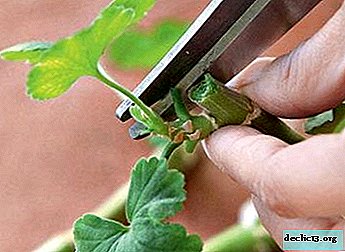 Cuttings can be taken from early spring to autumn. Do not use cuttings taken for propagation in winter, as they are characterized by a low level of growth hormones.
Cuttings can be taken from early spring to autumn. Do not use cuttings taken for propagation in winter, as they are characterized by a low level of growth hormones.For the cuttings, the apical parts of the shoots are chosen. After removing the lower leaves, an oblique section is made, which must be dried. Preparations that stimulate the formation of roots are not required for pelargonium. As the soil, you can use a mixture of peat and sand in equal proportions.
Watering is necessary only when the soil dries. At the second watering, it is recommended to add a systemic fungicide.
- Seed propagation. You can buy seeds of hybrids of the first and second generations. Due to the fact that pelargonium grown in this way does not always retain varietal characteristics, this method of reproduction is not popular among gardeners.
Conclusion
A wide variety will allow any grower to choose that sort of pelargonium silk that will fit well into the interior, and proper care will allow the plant to bloom for a long time and magnificent.

 Yellowing leaves and falling flowers are a symptom of a violation of the water regime. The soil is either too dry or too moist. Need to revise the watering schedule.
Yellowing leaves and falling flowers are a symptom of a violation of the water regime. The soil is either too dry or too moist. Need to revise the watering schedule. Cuttings can be taken from early spring to autumn. Do not use cuttings taken for propagation in winter, as they are characterized by a low level of growth hormones.
Cuttings can be taken from early spring to autumn. Do not use cuttings taken for propagation in winter, as they are characterized by a low level of growth hormones.


